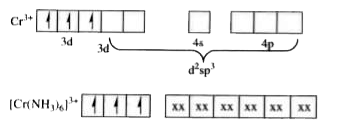A
B
C
D
Text Solution
Verified by Experts
The correct Answer is:
|
Topper's Solved these Questions
CO-ORDINATION COMPOUNDS
AAKASH SERIES|Exercise LEVEL-II LECTURE SHEET EXERCISE-II (Linked Comprehension type questions ) Passage-V|3 VideosView PlaylistCO-ORDINATION COMPOUNDS
AAKASH SERIES|Exercise LEVEL-II LECTURE SHEET EXERCISE-II (Linked Comprehension type questions ) Passage-VI|3 VideosView PlaylistCO-ORDINATION COMPOUNDS
AAKASH SERIES|Exercise LEVEL-II LECTURE SHEET EXERCISE-II (Linked Comprehension type questions ) Passage-III|3 VideosView PlaylistCHEMISTRY IN EVERYDAY LIFE
AAKASH SERIES|Exercise PRACTICE SHEET - 2 (PRACTICE SHEET -2 (INTEGER ANSWER TYPE QUESTIONS))|7 VideosView PlaylistCOMPLEX COMPOUNDS
AAKASH SERIES|Exercise PRACTICE EXERCISE|45 VideosView Playlist
Similar Questions
Explore conceptually related problems
Knowledge Check
A
B
C
D
Submit
A
B
C
D
Submit
A
B
C
D
Submit
Similar Questions
Explore conceptually related problems
